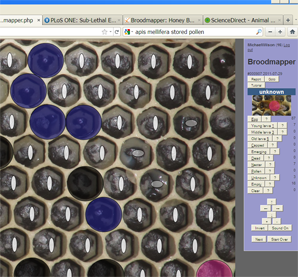 Beekeepers can participate in collecting data to measure climate change using hive scales
Beekeepers can participate in collecting data to measure climate change using hive scales
Author: Jennifer Berry, The University of Georiga, Honey Bee Program
Orignially Published in Bee Culture Feburary 2013
Last year, 2012, weather had a considerable impact on certain portions of the US, which seems to be the trend lately. For instance, it was either too wet, too dry, too hot, too cold, (too windy even), and when you mix too hot, dry and windy, disastrous events can occur. …




 Honey Bee Colony Losses in the USA. The Bee Informed Partnership.
Honey Bee Colony Losses in the USA. The Bee Informed Partnership.
